THE HIGH WATER MARK






June 2023 - Volume 33, Issue 2
Mission: To promote the common interest in reducing flood losses and to encourage the protection and enhancement of natural floodplain values.
Chair Mike Nowlan Wood Rodgers, Inc. 916.326.5277
Vice Chair
Brent Siemer City of Simi Valley 805.583.6805
Treasurer
Connie Perkins-Gutowsky California DWR 916.973.3008
Secretary Vince Geronimo Geronimo Engineering 415.652.6667
Past Chair
Alex Yescas HDR, Inc. 858-712-8283
Director
Abigail Mayrena Clark County RFCD 702-685-0000
Director
John Moynier Parsons Corporation
Director
Wendy Wang
Central Valley Flood Protection Board
Director
Brian Brown California DWR
Director
Darren Suen Central Valley Flood Protection Board 916.574.0609
Director
Millicent Cowley-Crawford Woodard & Curran 415.321.3421
Director
Hilal ElHaddad
Riverside County Flood Control and Water
Director
Pat Wood Los Angeles County DPW 626.458-6131
Director
Roger Leventhal Marin County DPW 415.473.3249
Director
Megan LeRoy California DWR
Director
David Smith
WEST Consultants, Inc. 858.487.9378
Advisor
Kelly Soule California DWR 916.574.1205
Advisor
Victoria LaMar-Haas
CA Governor’s Office of Emergency Services
Advisor
Stefani Lukashov
California Geological Survey 916.445.1825
Advisor
Salomon Miranda California DWR 818.549.2347
Advisor
Jayme Laber
NOAA
Advisor
Eric Simmons
FEMA Region IX 510.627.7029
Advisor
Erin Warnock Nevada DWR 775.684.2890
Advisor
Jeanne Ruefer HWC, Inc. 775.722.7395
Advisor
Carol Tyau-Beam Hawaii DLNR 808.587.0267
Executive Director
George Booth, CFM FMA 916.847.3778
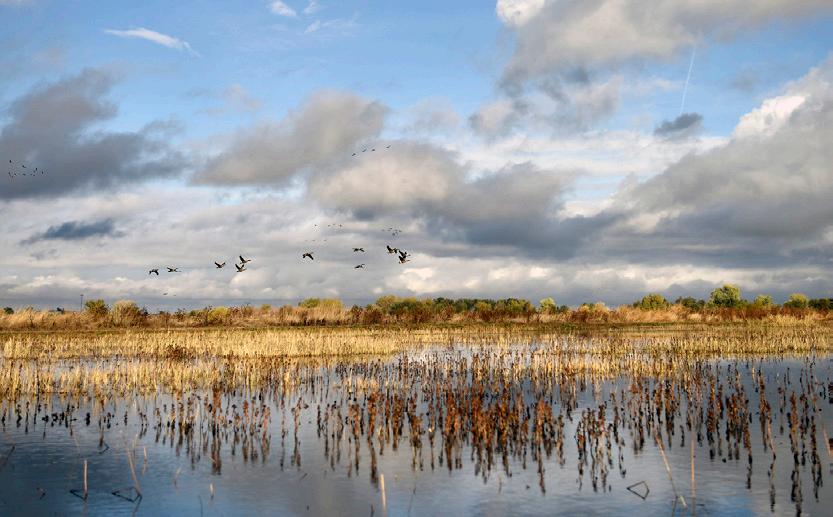
Thank you for supporting FMA! I ended my last letter to you with those words. I think it is fitting that I begin this letter with those same grateful words, and have an “attitude of gratitude”. Certainly there have been challenges over the past few months, the most significant of which has been related to our Executive Director position. As most, if not all, of you have heard, we have wished Brittany success in her future endeavors, but she has chosen to leave FMA. Fortunately, we had an individual in the wings who was able to step in and save the day! It is the one and only George “Let’s Associate” Booth! You may know him. If you don’t, you will. It has been a bit of a whirlwind transition beginning in the month of April. In my opinion, we are still in that stage of transition, as George picks up all the balls and starts juggling. I am very thankful that George was available, and we didn’t need to make a nationwide search that could have taken many months and made this year even more challenging.
I do ask that you treat George with a little grace as he makes this transition and gets up to speed with all of you! The Conference Planning Committee has been going full speed while Brittany was with us, so George has
jumped in to help ride that freight train. I am sure that the planning will culminate in a very successful program, as always! Of course, you are all encouraged to attend our conference in Los Angeles this year. I look forward to hearing the great speakers, panel discussions, and technical presentations, and I hope that you do too.
We have also finalized the logistics for the California Extreme Precipitation Symposium (CEPSYM) this year. It will be held at UC Davis on June 27th and will be an in-person-only event. Please join us as we come out of a very wet season and discuss various topics under the theme “Water Management Options for Adapting to California Droughts and Floods”.

Last, but not least, we need you to help direct FMA’s future. I have included more information later in this newsletter relating to your future participation on the Board of Directors. I look forward to seeing your nominations come pouring in! We will be formulating the ballot for your election of the next Board of Directors before the conference, so stay tuned and participate however you can.
As always, thanks for supporting FMA!
SAVE THE DATE
California Extreme Precipitation Symposium (CEPSYM)
“Water Management Options for Adapting to California Droughts and Floods”

June 27th, 2023
UC Davis Campus, Davis, CA Visit – www.cepsym.org
Tetra Tech is pleased to be ranked #1 in Water by Engineering News-Record for 16 years in a row.

We are proud to be home to leading technical experts in every sector and to use that expertise throughout the project life cycle. Our commitment to safety is ingrained in our culture and at the forefront of every project.

Floodplain Management Association Annual Conference
September 5-8, 2023
Westin Bonaventure Hotel – Los Angeles, CA Visit – www.floodplain.org
tetratech.com
For an update of the latest disaster declarations: CLICK HERE
For information on Flood Insurance Reform – Rates and Refunds: CLICK HERE
• Federal disaster declarations in April 2023 for flooding and severe storms include California (DR-4699-CA) for 15 counties and Nevada (DR-4708-NV) for six counties. Damage in January 2023 resulted in a major disaster declaration including 44 California counties (DR-4683-CA). Public assistance helps state and local governments with emergency response, recovery, and mitigation costs. Residents in more counties may become eligible for federal disaster assistance to support recovery efforts as officials finish assessing damages.
• FEMA is temporarily suspending initiation of Letters of Map Revision based on Fill (LOMR-Fs) and Conditional Letters of Map Revision based on Fill (CLOMR-Fs) in thirty-two California counties, and the cities and towns within them, effective July 1, 2023. This is needed to avoid potential adverse impacts on threatened and endangered species prior to consultation under the Endangered Species Act, and is in addition to six, southern California counties where a temporary suspension began August 2020. CLOMR-F or LOMR-F requests received after the suspense date are suspended without a FEMA determination. One can email nfip-esa-consultation-2020@fema.dhs.gov with a question on the temporary suspension or FEMA’s consultation with the National Marine Fisheries Service and the U.S. Fish and Wildlife Service. This suspension does not impact other letters of map change including Letters of Map Amendment, Conditional Letters of Map Revision, and Letters of Map Revision.
• A new FEMA report Building Community Resilience with Nature-Based Solutions highlights strategies for implementing successful projects and design for the future.
• State and local mitigation planning policy guides became effective for all FEMA plan approvals on April 19, 2023.
• Updated hazard mitigation assistance policy guide replaces 2015 guidance.
May 9, 2023
The California Department of Water Resources (DWR) is implementing an emergency program to divert high river flows away from flood-prone Central Valley communities and into groundwater recharge basins. DWR is working with local agencies and equipment vendors to provide funding and secure much-needed temporary diversion equipment, including pumps and siphons, and will support their deployment by local agencies.
The first set of temporary pumps and siphons were deployed by Fresno Irrigation District on April 25. The district is reducing downstream flood impacts in the Tulare Lake Region and expanding groundwater recharge efforts by diverting water from Kings River reaches to existing recharge facilities or working agricultural lands.
Read more
State and federal partners are monitoring the spring snowmelt, responding to requests for materials and technical assistance, and providing advance planning to communities and counties that may be affected by the incoming flows. Key areas of focus include the San Joaquin Valley and Tulare Lake Basin. DWR staff have been providing information about potential impacts at public meetings organized by local officials. Report flood incidents to (916) 574-2619 or call (800) 952-5530 to listen to river forecasts, general water conditions, and flood information.
May 1, 2023
The Department of Water Resources (DWR) today conducted the fifth snow survey of the season at Phillips Station. The manual survey recorded 59 inches of snow depth and a snow water equivalent of 30 inches, which is 241 percent of average for this location on May
1. DWR’s electronic readings from 130 snow sensors placed throughout the state indicate the statewide snowpack’s snow water equivalent is 49.2 inches, or 254 percent of average for this date.
Read more
Current regional snowpack
Historical snowpack comparison
NFIP
April 30 to May 5, 2023: DWR’s Garret Tam Sing instructed the EO273 course, Managing Development Through the National Flood Insurance Program (NFIP), at the FEMA’s Emergency Management Institute in Emmitsburg, MD. Training was provided to 30 students from across the nation to help them understand the NFIP requirements and to prepare them for the Certified Floodplain Manager’s exam.
May 6-12, 2023: DWR staff attended the 2023 Association of State Floodplain Managers (ASFPM) Conference in Raleigh, NC. The annual conference brings together floodplain mangers from across the county for training, networking, workshops, and collaboration. Garret tam Sing proctored the Certified Floodplain Manager (CFM) Exam, co-hosted the CFM Ethics Virtual Webinar, and co-instructed the CFM Boot Camp.
Questions?
Nikki Blomquist, Advisor
California Department of Water Resources
Nikki.Blomquist@water.ca.gov (916) 820-7749
Salomon Miranda, Advisor
California Department of Water Resources
Salomon.Miranda@water.ca.gov (818) 549-2347
See the latest news stories relating to Hawaii’s floodplain management issues. For the transformed flood information platform from Hawaii visit their exciting weekly blog at https://waihalana.hawaii.gov/
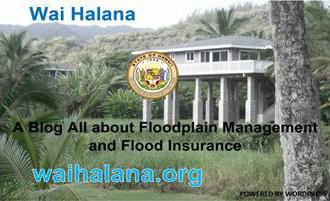
Some of the latest postings relate to hurricane preparedness, stewarding our environment, and Flood Insurance. For archived Wai Halana Newsletters (prior to 2018) https://dlnreng.hawaii.gov/nfip/wai-halana/
The Nevada Floodplain Management Program supports in-person outreach throughout the year by attending events as requested, and by selecting appropriate events to participate in, with community, federal, and tribal partners. Recent in-person outreach efforts include the Fernley Science, Technology, Engineering, and Mathematics (STEM) Festival and Reno Earth Day. The flood program team brought the interactive flood model and outreach materials with us to these events.
Nevada Silver Jackets projects (interagency efforts between the US Army Corp and State Floodplain Management partners) are still underway along with some newly awarded projects and drafting the FY24 Project Proposals. In February we hosted an in-person Nevada Flood Mitigation and Funding Opportunities Workshop in Clark County. Next up will be a Flood Mitigation (FMA) Grant specific one-hour webinar on May 25, 2023 at 2:30pm; please email Nvsilverjackets@usace.army.mil to register for this webinar. Ongoing Silver Jackets projects have include the development of an informational pamphlet for teachers that summarizes all of the standard classroom curriculum we have created to go hand in hand with our virtual outreach materials. This pamphlet and all other materials will then be accessible on our website; Nevadafloods.org. Lastly the Nevada Silver Jackets have prepared a draft Floodplain Management Plan for South Fork dam in Elko County with the goal of this being an
example for applicants applying for funding from FEMA’s the Rehabilitation of High Hazard Potential Dams (HHPD) grant program. This fiscal years’ awarded projects include a Comprehensive High Watermark Campaign that entails working with communities to create high watermark signage that also ties back to more in depth information on our website Nevadafloods.org with hopefully an interactive map that will continue to grow with high watermark locations and information. If you are interested in a high-water mark sign for your community, please email Nvsilverjackets@usace.army.mil. The other latest project is the Nevada Arid Region EAP. All projects and project proposals will be shared at our upcoming semiannual Nevada Silver Jackets meeting on June 20, 2023 at 9:30am where all interested stakeholders are welcomed.
A new effort from the Nevada Floodplain Management Program includes hosting Nevada Local Floodplain Managers Quarterly Meetings. These quarterly meetings will incorporate a plethora of Floodplain Management information including Federal Emergency Management (FEMA) updates, State updates, funding opportunities, outreach opportunities, guest speakers, and general Flood Awareness Week planning. We hope that these meetings can serve as a platform to touch base quickly and efficiently with all our local communities each quarter, as we know many of our local administrators are wearing several hats. Our next meeting will be July 13, 2023 at 10:00am.


“We would like to welcome you to the Board!” Those are words I would love to say to every member of FMA at some point. I guess technically I am saying them to you now, in a hypothetical sense! The reality is that holding a position of leadership in FMA, while fully open to all, is a limited engagement requiring some somewhat specific qualifications, while also securing the majority of votes in your favor. In order to be voted on, you need to get on the ballot, so let’s talk openly about the process.
First off, serving on the FMA Board is a volunteer position. It is not a paid position using FMA funds. Certain expenses are allowed for reimbursement, but I can’t remember the last time someone serving on the board tried to get reimbursed. While most/all of the board are paid by their companies/agencies to serve, there are some who have had to pay for their own participation at certain events that their employer did not wish to cover. Each person is left to negotiate their own arrangements with their respective employer. Most importantly, what I want to dispel is the notion that the Board of Directors is an exclusive club. If it is being perceived as an exclusive club requiring special access, then this article should hopefully dismantle that perception. You do not need to “know someone” to be nominated. It doesn’t hurt to know someone, but I am telling you now that it will not give you an advantage to being nominated and considered. After you are nominated, we will need to compare your qualifications to the qualifications for the position you seek to hold, to then place you on the ballot. That is why we have written out the position descriptions for each seat on the Board of Directors of FMA. The following link will give you access to a pdf containing these descriptions for your consideration
https://floodplain.org/resource/resmgr/ governance/board_member_key_roles_2023.pdf
Please allow me to provide some background that may or may not have colored people’s perceptions in the past. Over the years FMA has been growing, we have been seeking input on the board from a diverse number of perspectives within the
floodplain management community. Therefore, we have identified some positions on the board to be limited to certain geographical regions, because floodplain management issues can be different in Northern California and Southern California and Nevada. Issues can also be perceived differently by public and private sector individuals, so we have designated some positions to be held by either public or private professionals. This is intentional. In order to get such diversity on the Board, previous members of the Board “recruited” people. Believe it or not, it is not always that easy to get any candidates that are willing to give their time. FMA is subject to “market forces” like everyone.
The guiding documents for our association, that can be found on our website here, also direct that the board itself has its own leadership structure, requiring some additional experience/qualifications as well. This is also intentional. To keep the integrity of FMA intact, the chairperson of the Board should have experience on the Board before serving as its chair. There is a built-in preference to have an individual that understands how the Board works and the issues we typically deal with, before being considered to lead it. We also have some positions that are “At Large” for any individual, public or private, to hold. Some of these positions are open for nominations for the next election (this year). The following list is the complete list of positions that will be voted on this election cycle; Board Chair, Board Vice-Chair, Board Treasurer, Board Secretary, Northern Public, Southern Private, At-Large Director 1, At-Large 3 Elected Official, At-Large 6 EP (Emerging Professional), and Legal/Legislative At-Large.
Please, please, please, consider nominating someone you know that you believe meets the minimum qualifications, and we will contact them to see if they are interested. If you wish to nominate yourself, please do so. The person in charge of pulling together the ballot is the past chairperson (this is intentional as well), which is Alex Yescas. He can be contacted at Alex.Yescas@hdrinc.com

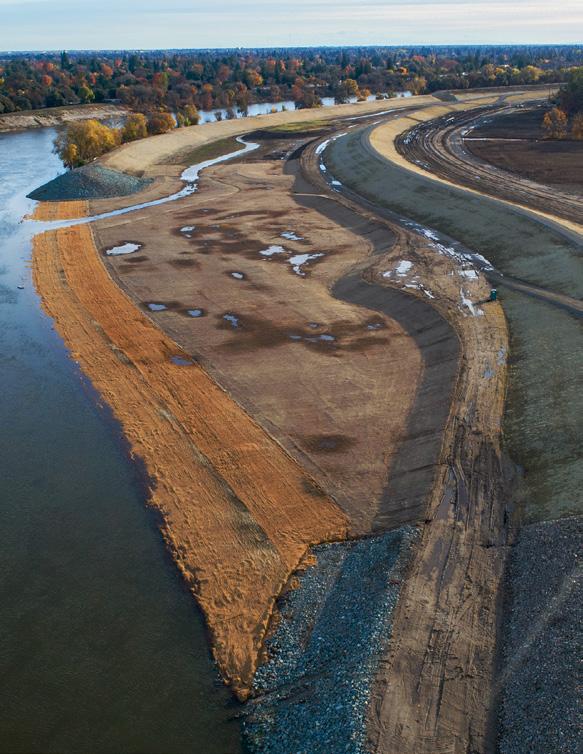
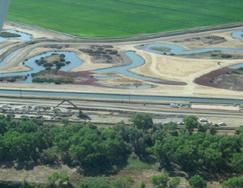

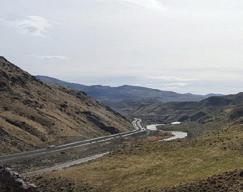

Adapted by Lisa Beutler from the January 2023 DWR sponsored white paper Addressing Complex Problems Together: A Network Story, by Orit Kalman, Mike Antos, Marisa Perez-Reyes, and Jenny Marr
Climate change has upended one of California’s primary water storage and delivery systems but an emerging strategy, Flood MAR, holds promise in helping the state manage this new normal. However, implementing Flood MAR requires more than engineering new infrastructure and changes in land use. It requires new ways of working together to address complex system issues.
Historically, the state’s winter snowpack paired with human and nature-based conveyance infrastructure faithfully delivered spring and summer snow melt to the many people that wanted it when they wanted it. This system allowed people to live and work in places that otherwise could not sustain them. When nature didn’t cooperate and generated massive volumes of water, the flood management system did its best to tame it. But when there was too little, California’s groundwater basins filled the gap. In a typical year, about 40 percent of the state's total water supply was already sourced from groundwater but, in dry years, groundwater contributed up to 60 percent (or more) of the state's total supply.
With climate change, the two lynch pins of the traditional water strategy have been knee capped. With climate change, the two lynch pins of the traditional water strategy and land management have been knee capped. In recent years a generally predictable weather cycle has instead delivered wild swings, resulting in extended droughts punctuated with drenching from extreme storms. Concurrently warming temperatures put snow melt into a system not designed to manage the volumes being generated. At the same time, extended droughts and continued alteration in land use patterns have caused groundwater basins to become overtaxed, in some cases beyond repair. This untenable situation led to the implementation of a Sustainable Groundwater Management Act (SGMA) that requires sustainable management of aquifer supplies. This law significantly altered what had been the go-to strategy for responding to extended droughts.
The consequences of the new normal have been extreme, creating entire communities without access
to safe and affordable drinking water and increasing risks from flood inundation. However, one new strategy, managed aquifer recharge using flood flows, called Flood MAR, may bring some relief and is gaining advocates in the water community.
Initial investigations by the California Department of Water Resources (DWR) indicated Flood MAR offered promise in mitigating the impacts of some of the wild weather swings. Recognizing this potential, DWR convened a Research Advisory Committee (RAC). The RAC, made up of 40 professionals across multiple disciplines, explored the highest priority steps needed to advance Flood MAR projects. This entailed considering 13 different themes, including changes in water governance, management, infrastructure, water rights, and water and land use practices. After deliberations the RAC members advanced a comprehensive list of recommendations and priorities, culminating in the development of the Flood MAR Research and Data Development Plan (R&DD Plan).
As is often the case with bodies of this type, in addition to the specific recommendations being generated, the RAC members recognized the value of the coordination and partnerships they had cultivated.
As is often the case with bodies of this type, in addition to the specific recommendations being generated, the RAC members recognized the value of the coordination and partnerships they had cultivated. As explained in the January 2023 DWR sponsored white paper this article is adapted from, Addressing Complex Problems Together: A Network Story (Kalman, Antos, Perez-Reyes, and Marr), the RAC recognized them as critical to achieving most of the research and data sharing activities that they proposed for strengthening Flood MAR implementation. From this a dialog began about a network amplifying the value of informal engagement, collective thinking beyond disciplinary silos, and sharing different perspectives. Soon, a recommendation emerged to create a Flood MAR (collaborative) Network.
To expand on the concepts being forwarded by the RAC, an October 2019 forum considered and acted upon the recommendations in the R&DD Plan, including discussing how, and in what form, a Flood MAR Network could be established. These conversations confirmed that more than physical infrastructure would be needed to achieve Flood MAR’s goals. New institutional structures and practices would be required that facilitated a shared purpose “among people who each have something to give and something to get as they work alongside each other,” (Kalman, et. al).
This Flood MAR Network is a collection of many different organizations, institutions, governmental agencies, corporations, foundations, etc., working in concert to pursue a common, defined purpose, as equal partners. As described in the January 2023 paper on the topic, “a network is defined as an intentional gathering of people and organizations, focused on addressing one or several complex and shared challenges or opportunities, undertaking shared efforts to strengthen each of its members while advancing shared interests.”
Networks allow individual action and organization autonomy. In their 2011 book, Networks that work: A practitioner's guide to managing networked action, Paul Vandeventer and Myrna Mandell explain that networks have been found to “bring greater scale and focus, more productive kinds of working relationships, and more lasting effectiveness when addressing public problems.”
Following a December 2020 convening of interested parties, potential network members identified five key areas consistent with their areas of expertise that align with the work of a learning/coordinating network:
1. Identify and fill knowledge gaps.
2. Share Flood MAR body of knowledge.
3. Communicate with Flood MAR interested parties on work to add to and build up collective knowledge and to inform future work in an efficient and effective way.

4. Educate and engage on how to get things done.
5. Support Flood MAR implementation efforts.
The forming network members explored their shared agenda by identifying broad objectives and brainstorming specific projects and initiatives that can help meet those objectives. In a network, work is only sustainable when based on a member’s interest and ability to follow up on projects, although participation may occur at varying degrees if it advances network initiatives. Networks are generally composed of:
• ANCHORS: Individuals who are willing to invest significant time and resources to coordinate and propel the activities and initiatives of the network and see them through.
• COLLABORATORS: Individuals who come together to roll up their sleeves and share in the work to advance activities and initiatives.
• AMBASSADORS: Individuals who can share information about related work done within and outside of the network to advance understanding with external interested parties and identify collaboration opportunities.
• BENEFICIARIES: Individuals who can use network activity outcomes to inform and advance their work outside of the network.
• INFORMED: Individuals who are connected to the network and seek awareness of network progress and output.
Questions to ask to identify and develop a shared agenda:
• What should we accomplish as a network that will provide an added value?
• How does each member aspire to contribute and participate in network activities?
• What are the next immediate steps to advance key network initiatives
Continued on next page
Adapted by Lisa Beutler from the January 2023 DWR sponsored white paper Addressing Complex Problems Together: A Network Story, by Orit Kalman, Mike Antos, Marisa Perez-Reyes, and Jenny Marr
A formal network that regularly convenes requires some organizing principles and structure to facilitate its shared efforts. Options include a network administrator and/or a steering, technical, or leadership team to inform network activities. These roles are not directive, instead they support development of working agendas and support for implementation of the agendas adopted by the network. Some best practices include:
1. Memorialize expectations in a network Memorandum of Understanding (MOU) or charter. As the network is a living, learning entity, it should continually revisit its purpose, to affirm activities are meeting the desired objectives. The charter should include principles of engagement, as well as expectations for meeting frequency and format.
2. Identify resources and opportunities for integration with other programs. This step will help ensure the network gains credibility and traction, maintains relevance, and operates efficiently.
3. Design communication mechanisms and messaging based on the role a network plays in sharing its work internally among members and with a wider external audience.
Since it first convened in December 2020, members have met at quarterly workshops to brainstorm and refine the initiatives that were needed to firmly establish the network. In addition to the quarterly workshops, a small planning team comprised of DWR staff and consultants met regularly with network members to advance the ideas that were expressed during these workshops.
Learning Groups encourage the flow of information among network members as well as with outside groups and interested parties. Those monitoring the groups note that while the intent is to focus on information exchange, they may lead to coordinated actions. The Forecast-Informed Reservoir Operation (FIRO) Group was formed by network members with goal of engaging experts in recharge and flood management to fill knowledge gaps and explore integration opportunities.
Initiative or Action Teams have advanced specific actions that support the network’s purpose. One example is the Flood- MAR website development initiative. A team member identified a volunteer web designer that implemented the initiative.
The January 2023 paper on networks found that the interdependencies inherent in the way that people, land and water interact suggest a role for networks. The intentional development of networks uncovers shared purpose, builds rapport and trust, improves understanding of complex issues, and supports more efficient or effective water and land management at different scales and contexts. The authors explain that Flood MAR stands as only one of many strategies that can be used where coordination and integration across a wide variety of administrative and infrastructural systems is needed in pursuit of better outcomes. This creates a significant opportunity to improve the integration of land, surface and groundwater management to create sustainable practices and provide benefits to meet local, regional, and statewide needs.
The FMA Newsletter welcomes the input of its members and now our extended family of readership to contribute to the conversation! Keep the great articles coming! We need to hear from all of you. There’s always room for more to join the ranks of published authors. Showcase your programs, projects, tools, policies, regulations or ideas to hundreds of floodplain management professionals throughout the U.S.! Articles must be submitted in Word format to fmaed@floodplain.org and may contain 2-3 small pictures. Preferred length is less than 850 words.

For more details, call (916) 847-3778.

I hesitate to write this article, but I feel I must, given the feedback and questions I am getting from others. I will say up front that the opinions expressed in this article are mine (Michael Nowlan), alone, and in no way are intended to represent the position of any other person or agency or company, including FMA.
Very soon, in the state of California, FEMA will be suspending the processing of all new fill-based map revision applications in many areas of Northern California. For those of us in the game, any new submittals of CLOMR-F and LOMR-F applications are suspended, effective July 1, 2023, in the majority of California counties. The current county projected count is 38 out of the 58 total. Applications received before July 1 will still be processed and completed, barring any unique issues that would normally derail an application.
I predict that this will be a hot topic of discussion at our next FMA conference. You see, the folks in Southern California have been dealing with this issue in 6 counties since 2020. Many, many folks are trying to figure out what this all means, including the folks in FEMA, and I sympathize with all involved. The folks in the rest of California are now feeling the pain that Southern California has been feeling. I am sure we will be sharing notes, or at least commiserating after sessions in the hotel bar.
So, what is the issue? As I understand it, it centers around FEMA’s responsibilities as a federal agency in meeting the requirements of the Endangered Species Act (ESA). If you have processed a CLOMR in the past decade or so, you should have noticed a little check box on the application forms, relating to ESA compliance. That little check box has greatly complicated the process, not that the process was uncomplicated to start with. For many years, meeting this requirement has been primarily the responsibility of the project proponent/applicant and the local land use authority (community) to work out. There is no doubt
that development projects can have environmental impacts, but the local planning and permitting process has been the front lines for these issues. FEMA has simply required that the ESA compliance be handled and documented by others, and provided to FEMA for verification, thanks to Congress’ insistence. FEMA is not a regulatory agency, or so I have been told many times.
Approving development has always been controversial, and usually requires numerous environmental studies and clearances before it can happen. These studies are usually paid for by each project proponent, documented, and submitted to others for their concurrence. This may be changing. It is being argued that administering the National Flood Insurance Program (NFIP) itself may be considered a federal action. This possibly stems from the belief that insuring risk somehow increases the impacts of that which is being insured, particularly with respect to flood insurance and the Endangered Species Act.
While we wait for FEMA to figure out its next move, the CLOMR-F/LOMR-F process will be suspended in 38 counties. That much we know, unless FEMA changes its mind before then. There is no date yet on when things will “return to normal”, whatever that means nowadays. At this time, it appears that all other application processes for revisions to FEMA’s maps are still available. This could change though, so stay tuned.

In the Emerging Professionals group, we often focus on bridging the gap between emerging professionals (roughly those people with 0 to 10 years of experience) and experienced professionals (people with 10+ years of experience). More often the seasoned professionals we collaborate with in Lunch-and-Learns and webinars have 20 or more years of experience and are nearing retirement. While this experience level brings an unmatched level of knowledge, the lack of mid-level professionals with maybe 10 to 15 years of experience is noticeable. Now there are an endless number of potential reasons for this. Mid-level professionals are likely to be in a busy time of the careers and personal lives as this is often when people are raising young children and navigating new roles both at home and at work. However, it seems like midlevel engineers aren’t just few and far between in the Emerging Professionals space, they are also hard to find for open employment positions. Managers have noted they are having trouble filling mid-level positions, especially with high retirement rates, and the need to continuously back-fill positions.
While age isn’t a perfect proxy for professional experience (and engineers are welcome to join the profession at any age) analyzing age trends of civil engineers can shed some light of the perceived and apparent “gap” in this profession. DataUSA provides a breakdown of civil engineers by age from 2014 to 2020. As shown in Figure 1, the share of younger engineers in the 25–30-year age range has increased steadily since 2014, and the share of mid-aged engineers in the 37–55-year range has declined. Interestingly, the 55- to 60-year range has also seen an increased share in the workforce over this time period.

The trends are even more evident when 2014 and 2020 are isolated in Figure 2

One can ask the question: Why is there a drop in the share of 37- to 55-year-old workers? One possibility is folks in this age range made the transition to the technology sector. Employment rates in the tech sector have varied throughout the 2000s. The peak of the “dot-com boom” or “tech bubble” occurred in the year 2000, with employment rates at their lowest in the industry after its burst in 2004. After this burst, coupled with lower employment opportunities during the 2007 to 2009 recession, the tech industry boomed again with job growth expanding 20.3 percent from 2010 to 2015 (compared to only 11.1 percent in the rest of the private sector). Importantly, wages in the technology sector increased approximately 5 percent each year from 2010 to 2015, resulting in average weekly wages that are at least double the wages in the private sector1. People who are 37 to 55 years old in 2020 would have been 17 to 35 years old in 2000 and 27 to 45 years old in 2010. While potentially providing less stability than a career in Civil Engineering, making twice the amount in wages and using similar skill sets could have been enough to pull people into the tech sector and away from Civil Engineering or encourage young college students to pursue computer science over engineering.
1 Charles S. Gascon and Evan Karson. 2017. “Growth in Tech Sector Returns to Glory Days of the 1990s.” Regional Economist. July 25. Accessed at https://www.stlouisfed.org/publications/regional-economist/secondquarter-2017/growth-in-tech-sector-returns-to-glory-days-of-the-1990s on March 30, 2023.
Continued on next page
Another reason for this drop could be the need to provide care for young children or aging parents that typically occurs between the ages of 30 to 40. Looking at the data again for these age ranges in Figure 3, there has been a drop in the share of 35-year-old engineers to 37-year-old engineers every year from 2015 through 2020.

All of this isn’t to say we don’t have talented mid-level professionals working in Civil Engineering and Floodplain Management today. We do, and they are likely to be stretched quite thin; managing increasing workloads as people retire, training new staff members as people enter the industry, while simultaneously managing personal life outside of work with children, aging parents, and large expenses like mortgages to worry about.
So, how can we help? As an industry, we should be working to support mid-level professionals by encouraging policies like parental leave and flexible work schedules, and be vocal about these policies as an example to other municipalities and consulting firms. Secondly, we should be diligent about building up the next generation (the emerging professionals), who will be integral to filling these gaps. Companies and agencies need to be intentional about developing resources and programs for career/professional development, mentorship, soft skill training, leadership and management training, and more for engineers of all experience levels. Finally, to the extent possible, ensuring successful emerging and mid-level engineers are paid a competitive rate, with wage increases commensurate with experience, cost of living, and updated industry baselines, could never hurt in increasing the retention of quality engineers.
Check out the Emerging Professionals website, which has been integrated with the main FMA website, for more information on how to become involved with or support EP programs like mentorship, Lunch-and-Learns, community service, and others.
THERE IS A RIGHT WAY TO DO THINGS.


AND THERE IS A NEW WAY TO DO THINGS.

AND SOMETIMES THEY’RE EXACTLY THE SAME THING.
